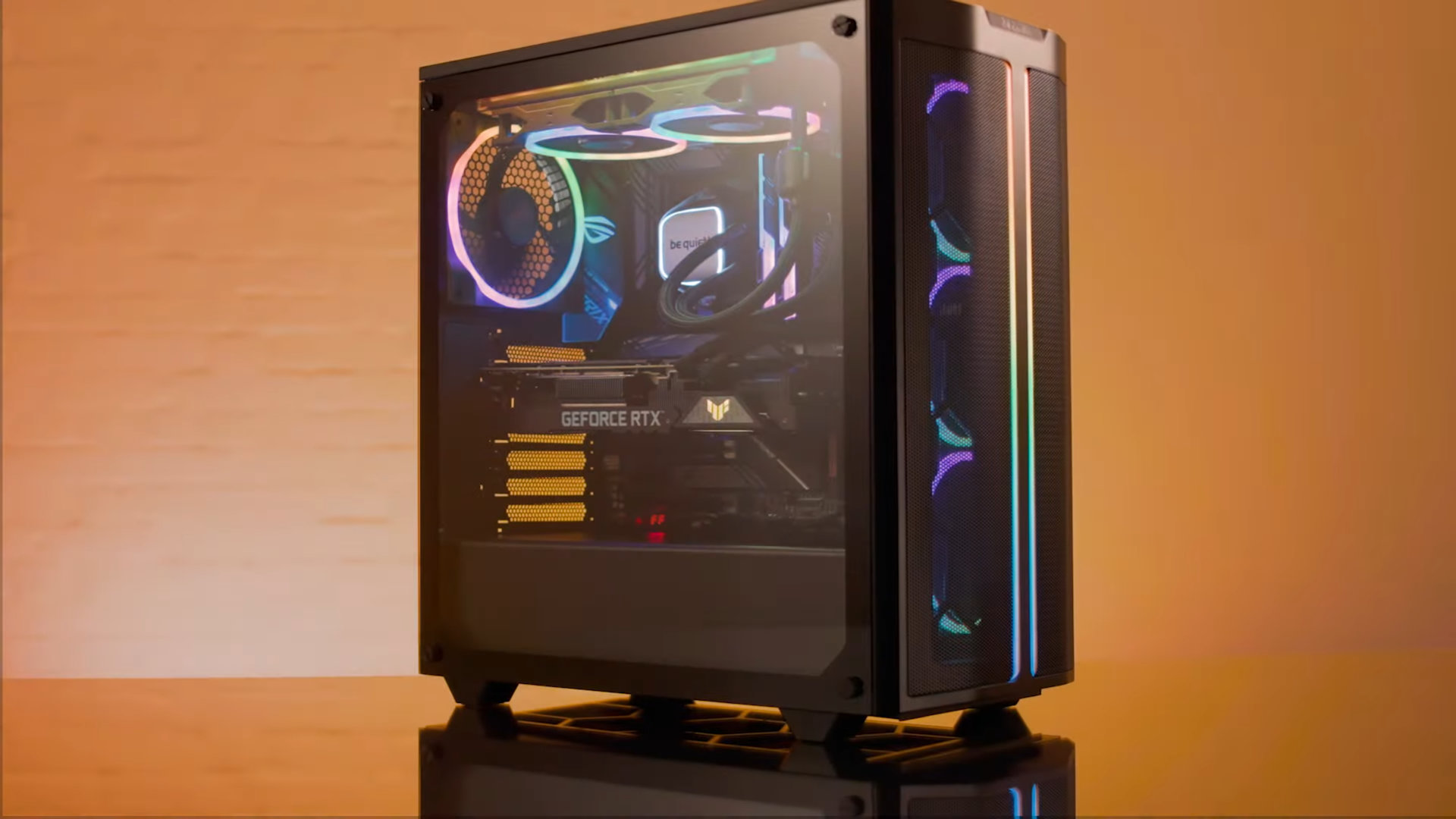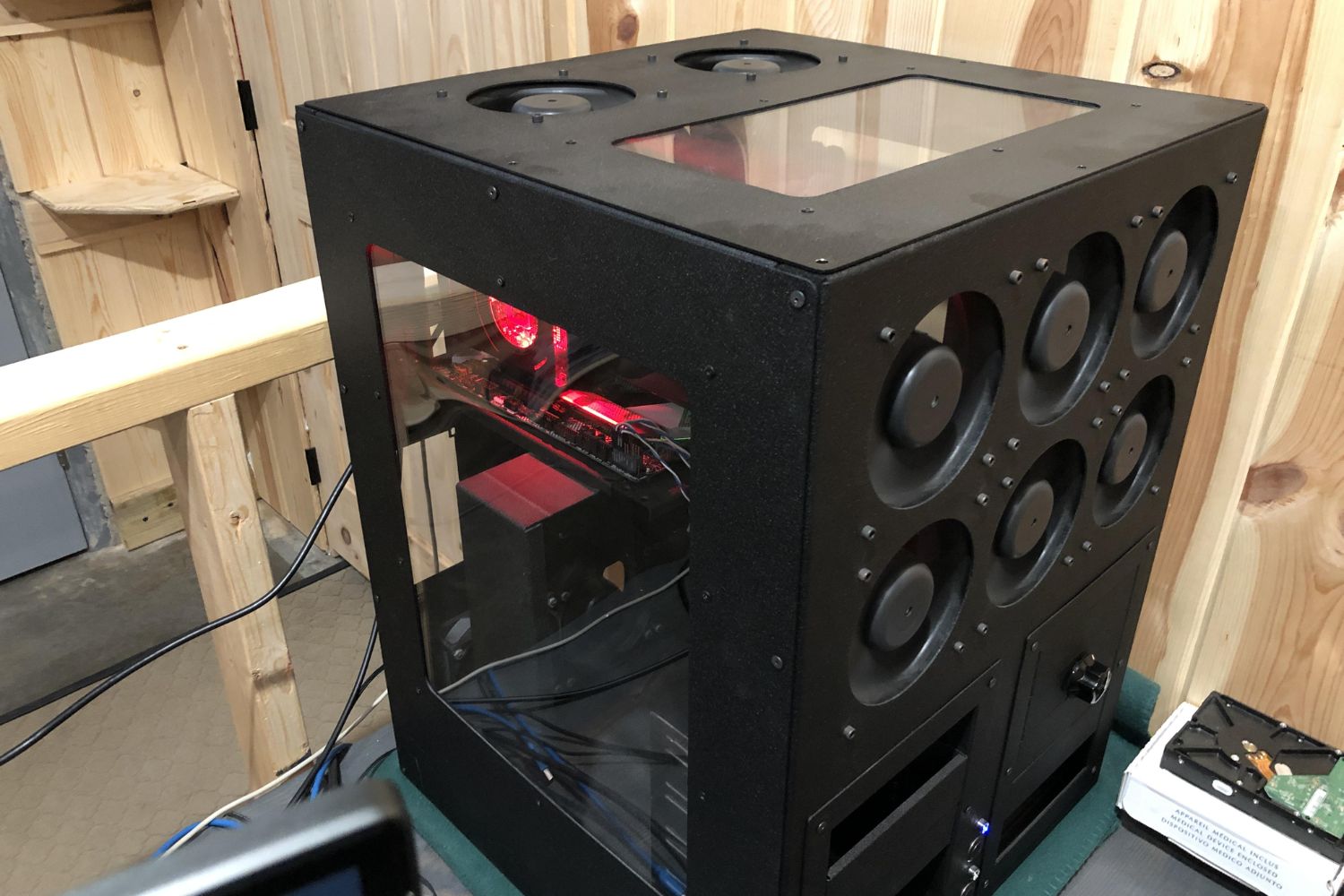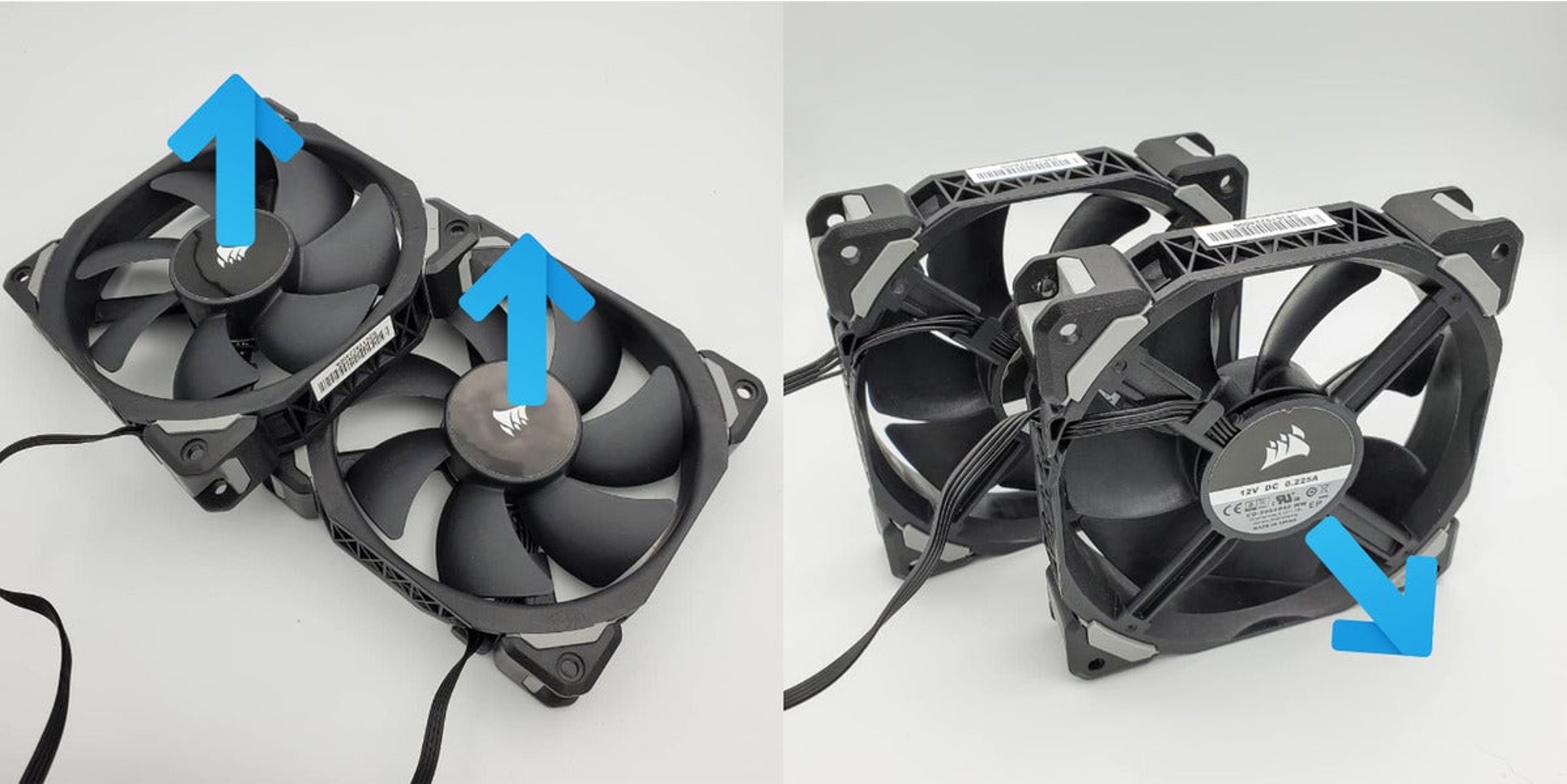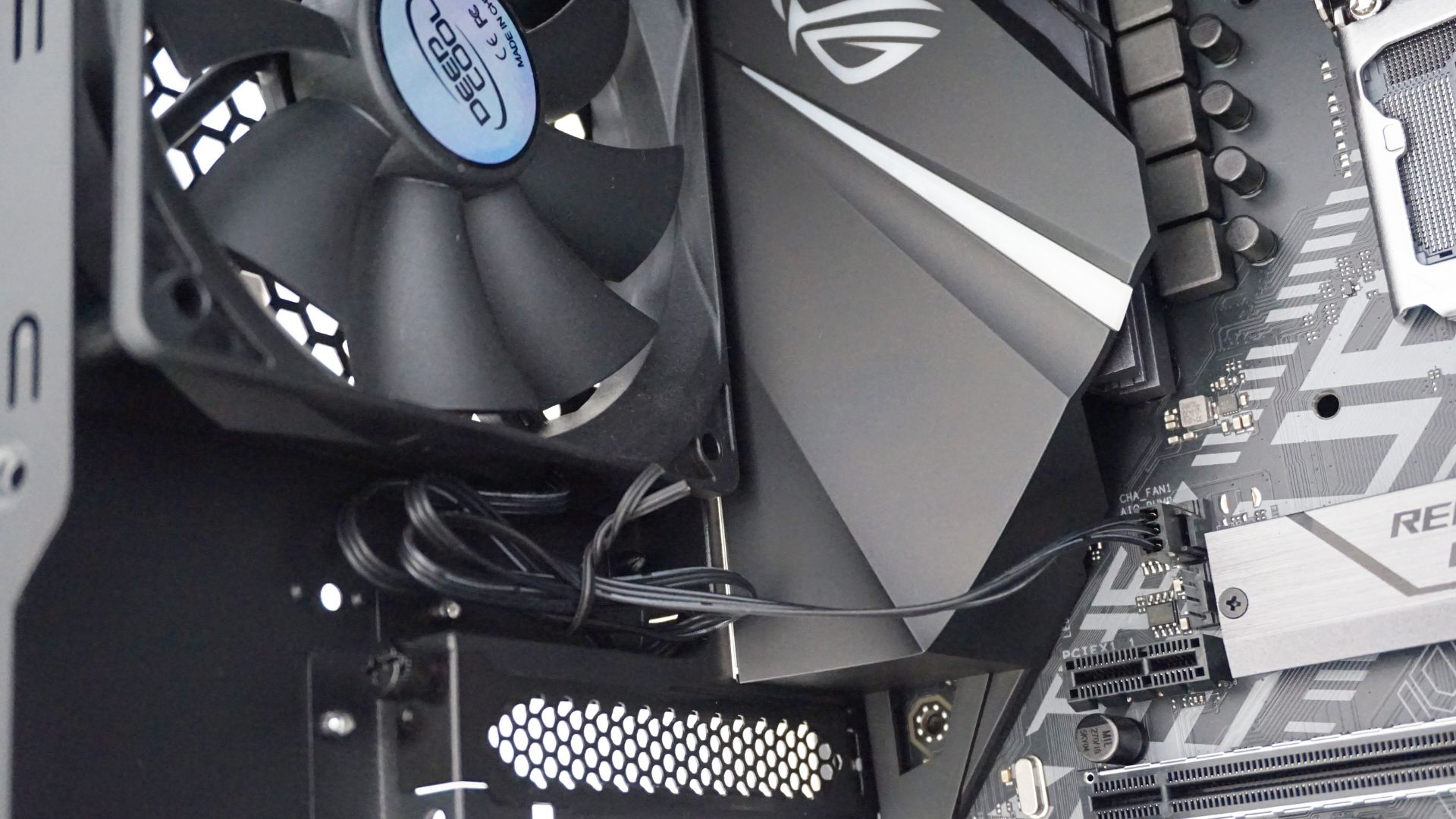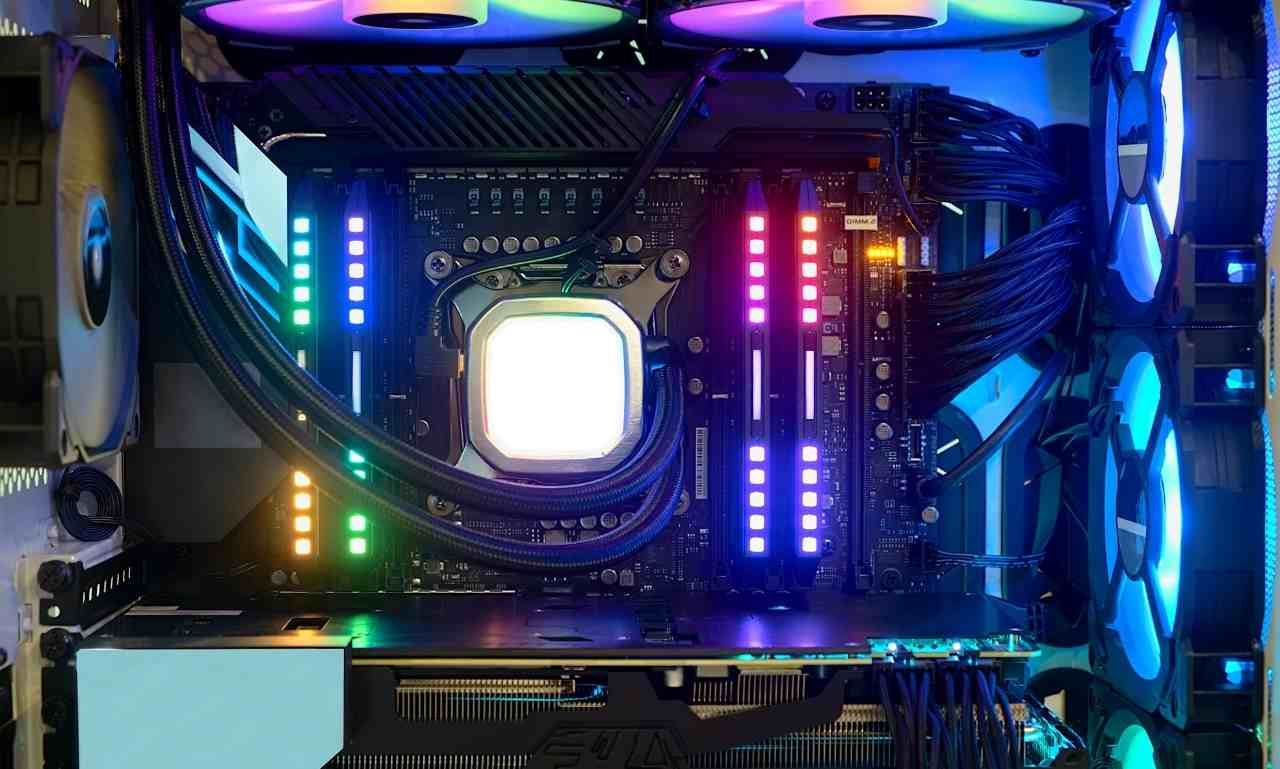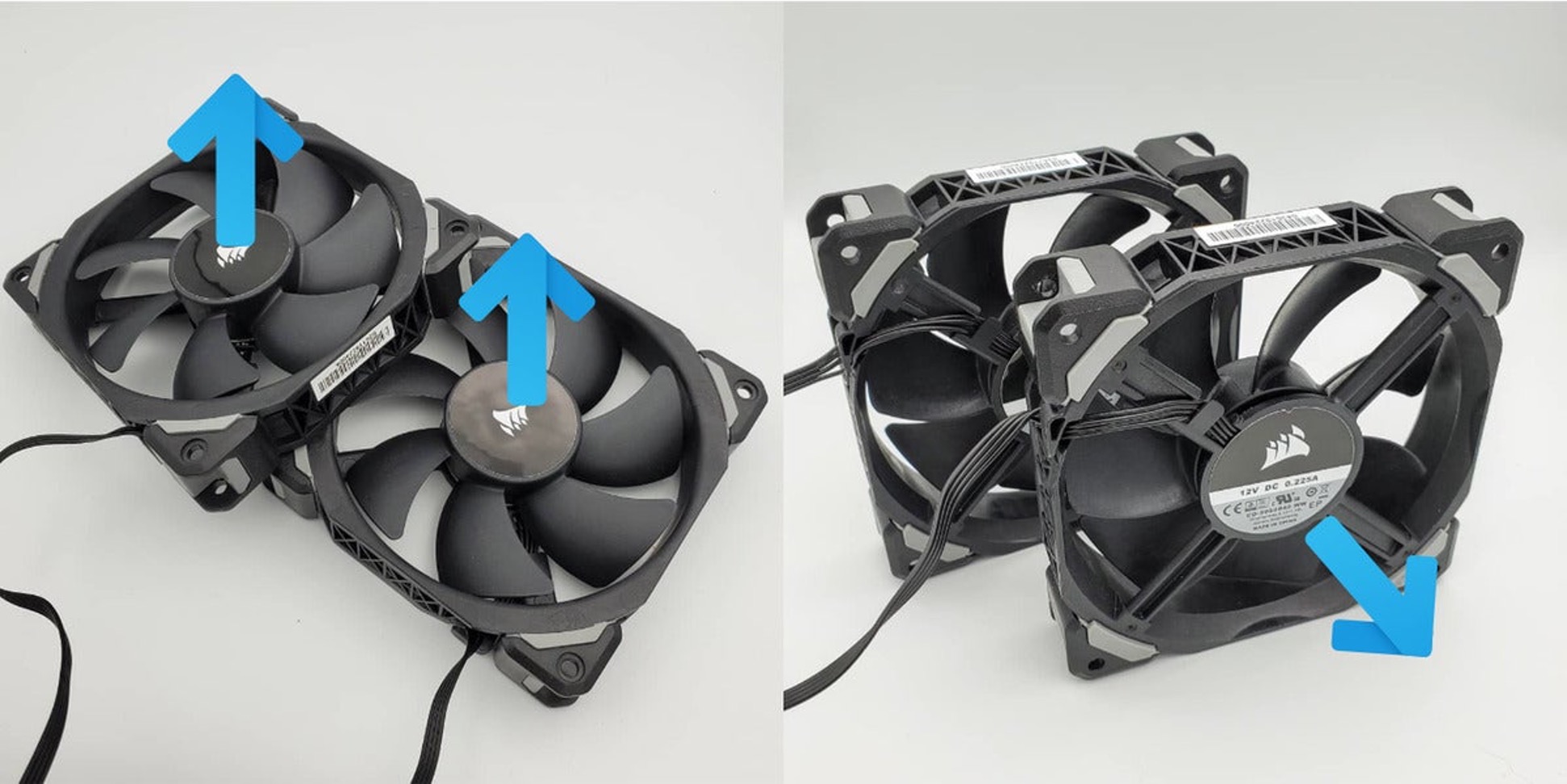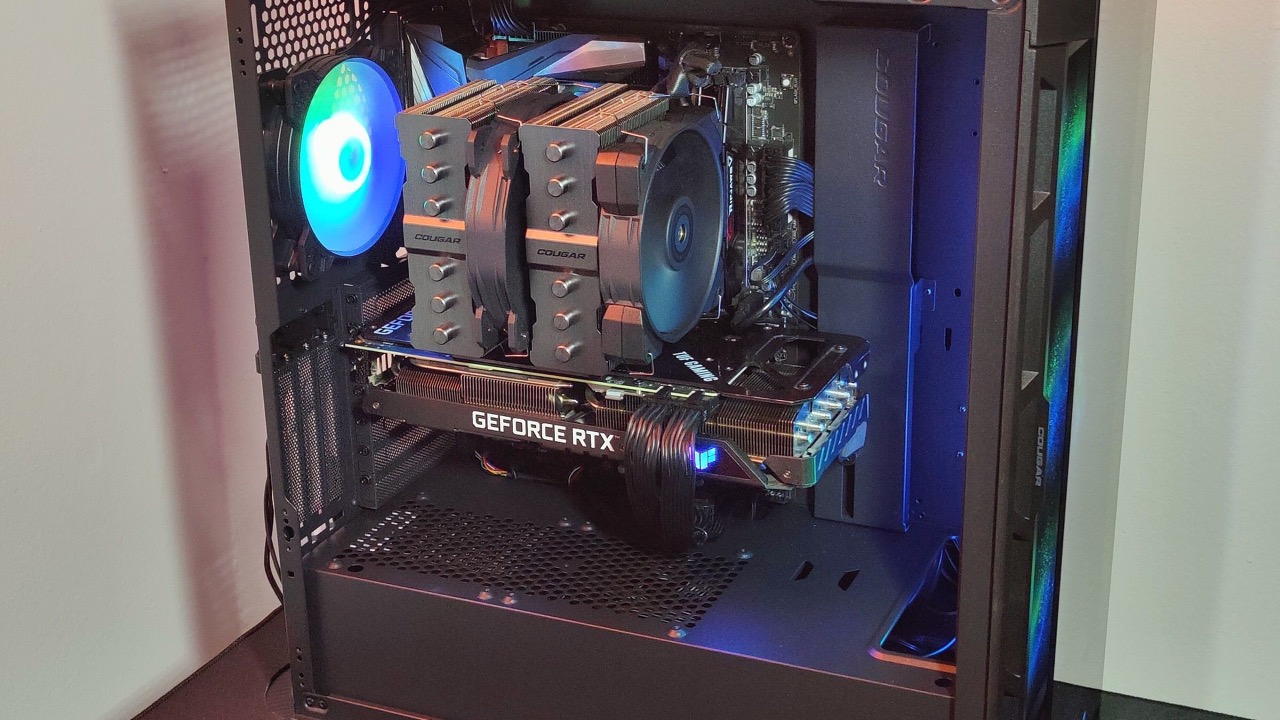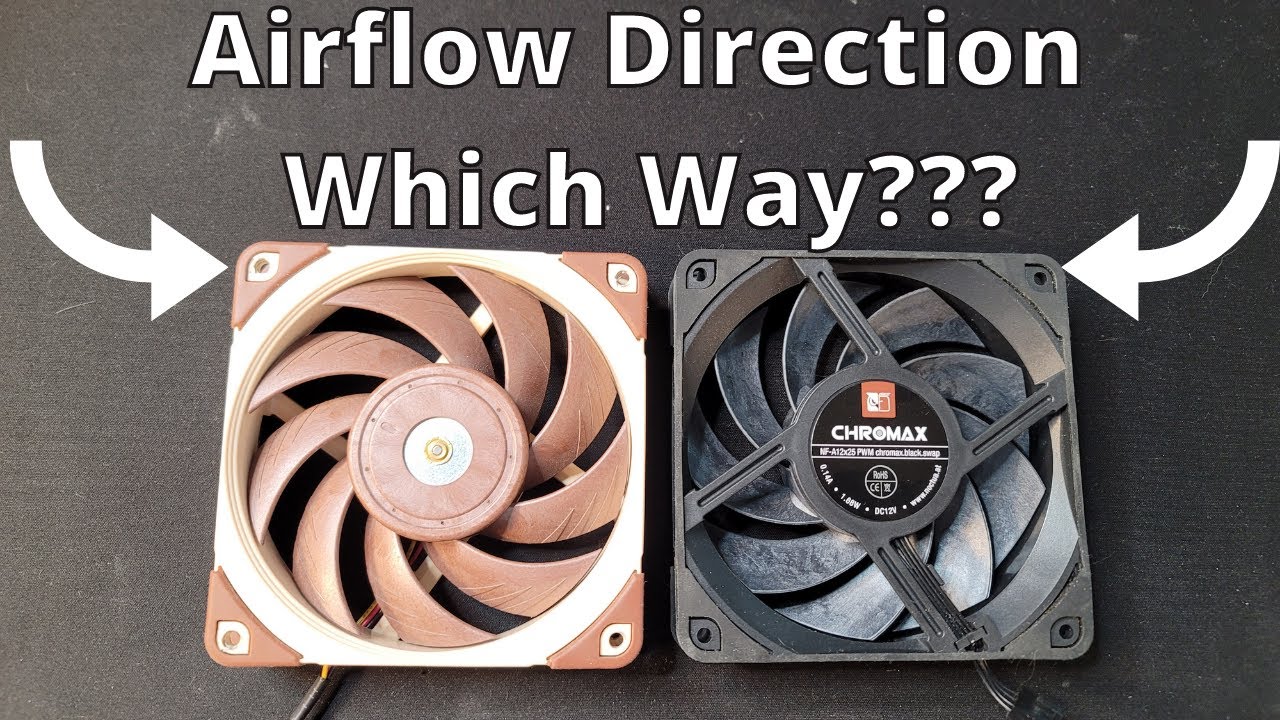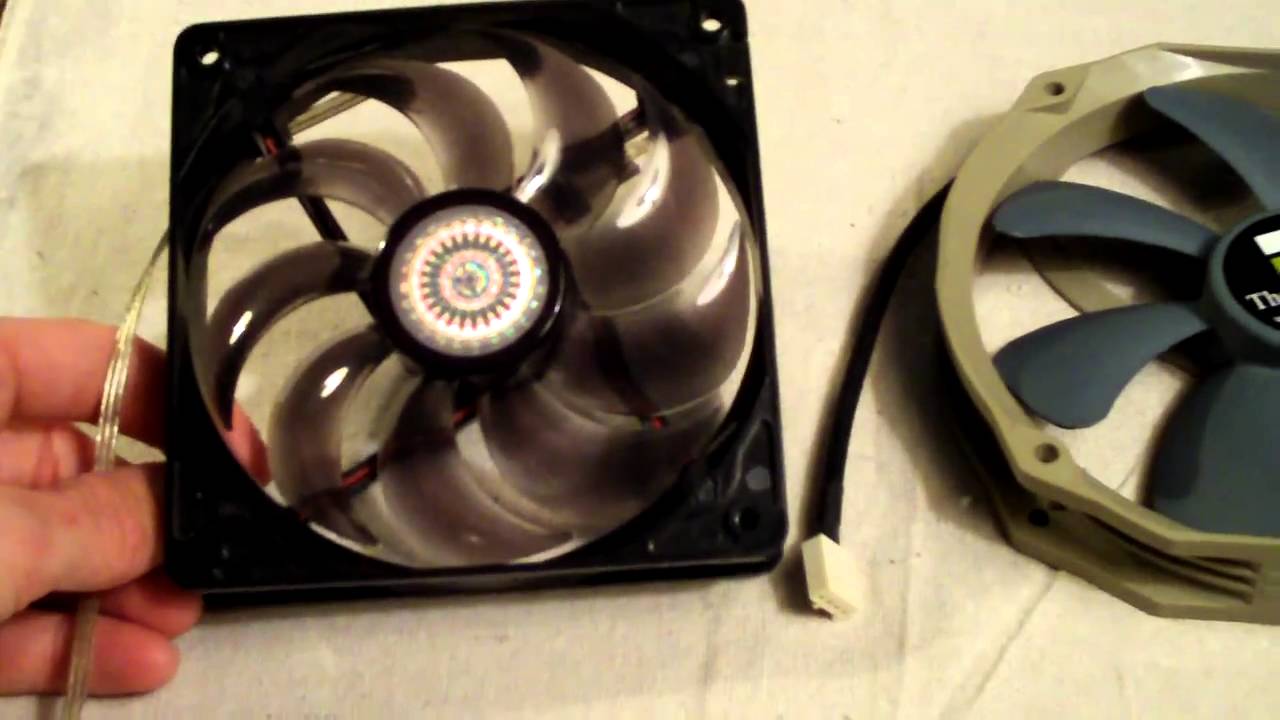Introduction
When it comes to optimizing the airflow in your computer case, understanding the roles of exhaust and intake fans is crucial. Case fans play a vital role in keeping your system cool, preventing overheating, and extending the lifespan of your components. However, determining whether a fan is an exhaust or intake can sometimes be confusing for beginners.
In this article, we will delve into the world of case fans and shed light on how you can easily identify whether a fan functions as an exhaust or an intake. Knowing the difference between these two types of fans will help you create an efficient cooling setup, reducing the risk of heat-related issues and improving overall system performance.
Whether you are a beginner or an experienced system builder, understanding the nuances of case fans can be intimidating. However, by familiarizing yourself with the characteristics of exhaust and intake fans, you will be better equipped to optimize the airflow within your computer case.
We will guide you through the process of differentiating between exhaust and intake fans, and provide practical steps to help you identify them in your own system. Additionally, we will discuss the importance of correct fan placement and its impact on overall cooling efficiency.
So, if you’re ready to demystify the world of case fans and learn how to determine whether a fan is an exhaust or intake, let’s dive right in!
Understanding Case Fans
Before we delve into identifying whether a case fan is an exhaust or intake, let’s first gain a solid understanding of these essential components. Case fans are small, electrically-powered fans that are typically installed within a computer case. Their primary function is to circulate air, ensuring that heat generated by the components is effectively dissipated.
Case fans come in different sizes, commonly ranging from 80mm to 140mm. Larger fans are generally preferred as they can move more air with lower noise levels. Additionally, fans can have different airflow ratings, typically measured in cubic feet per minute (CFM). A higher CFM rating indicates that the fan can move more air, resulting in improved cooling performance.
Now, let’s explore the difference between exhaust and intake fans.
Exhaust Fans: As the name implies, exhaust fans are responsible for expelling hot air from the case. They are usually positioned at the rear or top of the case. Exhaust fans create a negative pressure inside the case, drawing in cool air through other openings, such as vents or intake fans. By effectively removing hot air, exhaust fans help maintain a steady temperature within the case.
Intake Fans: In contrast to exhaust fans, intake fans bring fresh, cool air into the case. They are typically positioned at the front, bottom, or side of the case. Intake fans create positive pressure, forcing air into the case and facilitating the expulsion of hot air through exhaust fans. By providing a constant supply of cool air, intake fans contribute to overall system cooling.
By understanding the roles that exhaust and intake fans play in cooling your system, you can optimize their placement to achieve the best airflow. Determining whether a fan is an exhaust or intake will help ensure proper airflow direction and cooling efficiency.
Now that we have a solid foundation on case fans, let’s move on to discovering how to differentiate between exhaust and intake fans.
Difference Between Exhaust and Intake Fans
When it comes to cooling your computer system, understanding the difference between exhaust and intake fans is crucial. While both play important roles in maintaining optimal temperatures, their functions and placements differ significantly. Let’s explore the key differences between these two types of fans.
Function: The primary function of an exhaust fan is to expel hot air from the computer case. It helps remove the heat generated by components such as the CPU and graphics card. On the other hand, an intake fan brings in fresh, cool air into the case, preventing components from overheating and maintaining a balanced temperature.
Placement: Exhaust fans are typically placed at the rear or top of the case. This positioning allows them to effectively remove hot air that rises naturally within the case. Intake fans, on the other hand, are usually located at the front, bottom, or side of the case. They bring in cool air from the surroundings and direct it towards the components.
Airflow Direction: Exhaust fans push air out of the case, creating negative pressure. This negative pressure then draws cool air from other openings, such as vents or intake fans. Intake fans, on the other hand, force air into the case, creating positive pressure. This positive pressure helps expel hot air through exhaust fans and other openings.
Noise Levels: Since exhaust fans are responsible for removing hot air from the case, they tend to work harder and spin faster, resulting in slightly higher noise levels. Intake fans, on the other hand, typically run at lower speeds as they only need to bring in cool air. This results in quieter operation compared to exhaust fans.
Dust Accumulation: Due to their positioning and functions, intake fans are more prone to dust accumulation. They draw in air, along with dust particles, which can settle on the fan blades and components over time. It is important to regularly clean intake fans to maintain their efficiency and prevent dust buildup.
By understanding these distinctions between exhaust and intake fans, you can make informed decisions about their placement and optimize airflow within your computer case. Now, let’s move on to the practical steps you can take to identify whether a fan is an exhaust or intake!
How to Identify Exhaust Fans
Identifying whether a fan in your computer case is an exhaust or intake is crucial for proper airflow optimization. Luckily, determining whether a fan is an exhaust fan can be relatively straightforward. Here are the steps you can follow to identify exhaust fans:
- Check the Fan Placement: Exhaust fans are typically positioned at the rear or top of the computer case. Look for any fans in these areas to identify potential exhaust fans.
- Observe the Airflow Direction: Once you’ve located the fans in the rear or top of the case, observe the direction of airflow. Exhaust fans will be blowing air out of the case, expelling the hot air generated by the components.
- Feel for Air Exhaust: Place your hand near the fan to feel the air being expelled. If you can feel air being pushed out away from the case, then you’ve identified an exhaust fan.
- Check for Fan Labels or Markings: Some fans may have labels or markings indicating that they are exhaust fans. These labels may be present on the fan itself or on the packaging it came in.
Remember, exhaust fans work by expelling hot air from the case, creating a negative pressure that draws in cool air from other openings or intake fans. By properly identifying exhaust fans, you can ensure that the hot air is effectively removed from your system.
Now that you know how to identify exhaust fans, let’s move on to discovering how to determine whether a fan is an intake!
How to Identify Intake Fans
To optimize your computer’s airflow, it’s equally important to identify intake fans within your case. Intake fans help bring in fresh, cool air to prevent overheating. Here are the steps to identify intake fans:
- Check the Fan Placement: Look for fans located at the front, bottom, or side of your computer case. These areas are commonly where intake fans are positioned.
- Observe the Airflow Direction: Once you’ve located the fans in the designated areas, observe the direction of airflow. Intake fans will be blowing air into the case, directing it towards the components.
- Feel for Air Intake: Place your hand near the fan and observe the movement of the air. If you can feel air being pulled towards the case, then you have identified an intake fan.
- Check for Fan Labels or Markings: Some intake fans might have labels or markings indicating that they are intake fans. Look for any labels on the fan itself or its packaging.
Intake fans work by creating positive pressure within the case, forcing air into the system and facilitating the expulsion of hot air through exhaust fans and other openings. Identifying intake fans will help you ensure proper airflow and cooling efficiency.
Once you have identified both the exhaust and intake fans in your system, you can proceed to analyze their placement for optimal cooling. Remember, a well-planned fan setup can significantly enhance the overall performance and lifespan of your computer.
Now that you know how to identify intake fans, let’s emphasize the importance of correct fan placement in the next section.
Importance of Correct Fan Placement
The correct placement of case fans plays a crucial role in maintaining optimal temperatures and ensuring efficient airflow within your computer system. Proper fan placement can significantly improve cooling performance, reduce the risk of heat-related issues, and extend the lifespan of your components. Here are the key reasons why correct fan placement is essential:
Heat Dissipation: Correct fan placement allows for effective heat dissipation. Exhaust fans positioned at the rear or top of the case expel hot air generated by components such as the CPU and graphics card. Intake fans located at the front, bottom, or side bring in cool air to prevent overheating. By creating a balanced airflow, the heat generated by components can be efficiently dissipated.
Airflow Optimization: Proper fan placement ensures optimal airflow within the case. Exhaust fans create negative pressure, drawing in cool air through intake fans or other openings. Intake fans create positive pressure, facilitating the expulsion of hot air through exhaust fans. The correct placement of fans helps maintain a constant flow of cool air and prevents the buildup of stagnant hot air.
Component Cooling: Each component in your computer generates heat, and proper fan placement helps cool them effectively. By directing airflow towards critical components, such as the CPU, GPU, and motherboard, you can prevent them from reaching high temperatures. This cooling effect contributes to improved performance, stability, and longevity of the components.
Dust Prevention: Correct fan placement can also assist in preventing dust accumulation within the case. By strategically placing intake fans with proper air filters, you can minimize the amount of dust entering the system. Regular cleaning and maintenance of fans and filters will help keep the internal components free from dust, ensuring optimal cooling performance.
By understanding and implementing correct fan placement, you can create an efficient cooling setup for your computer system. Remember to consider factors such as the size and airflow rating of the fans, as well as the layout of your case. Experiment with different fan configurations to find the most effective setup for your specific system.
Now that you comprehend the importance of correct fan placement, let’s conclude our journey of understanding exhaust and intake fans.
Conclusion
Understanding the difference between exhaust and intake fans is crucial to maintaining optimal temperatures and airflow within your computer case. Exhaust fans expel hot air, creating negative pressure, while intake fans bring in cool air, creating positive pressure. By identifying the placement and airflow direction of fans, you can determine whether they function as exhaust or intake.
Proper fan placement is essential for efficient cooling and heat dissipation. Exhaust fans should be positioned at the rear or top of the case, while intake fans are typically located at the front, bottom, or side. This arrangement ensures a steady flow of cool air and expels hot air effectively.
The correct placement of fans can significantly impact component cooling, preventing overheating and extending the lifespan of your computer system. By optimizing airflow, you can enhance performance and stability, while also minimizing the risk of heat-related issues.
Regular maintenance and cleaning of fans and filters are necessary to prevent dust accumulation, ensuring that the cooling efficiency remains at its peak. Additionally, take into consideration the size and airflow rating of the fans when planning your cooling setup.
By mastering the art of identifying exhaust and intake fans and understanding their roles in cooling, you can create an efficient and effective cooling system for your computer. Remember to experiment with different configurations to find the best setup for your specific case and components.
With proper fan placement and airflow optimization, you can keep your system cool, enhance its performance, and prolong its lifespan. So, go ahead and apply what you’ve learned to create a well-cooled and efficient computer system.







